A Beginner’s Guide to Snowshoeing
Snowshoeing? Not for me! I’d always thought snowshoeing was just for wimps. However, I’m a convert and in this beginner’s guide, I’m hoping to convince you to try snowshoeing too.
Definitely not for us daredevil downhill skiers who like to feel the wind in their hair and the whoosh of snow under their skis (no, that’s not me either but I can dream…)
I discovered the joys of snowshoeing during those dreary pandemic months of winter 2021. There were no ski lifts running in France throughout the winter season. The super-fit were heading up the slopes carrying their skis on their backs. Children tobogganed on the lower slopes, and people like me had their noses pressed against the very cold glass in their apartments, dreaming of being in the first two categories.

Until I discovered the snowshoe! Once considered by myself to be deeply uncool and mind-bogglingly boring, it suddenly took on a new allure.
It was, in fact, the start of a whole new love affair. A means of getting out into nature, of experiencing the beauty of sparkling white branches in the forests, fresh virgin snow, and the compulsory thawing with a hot wine afterwards.
So why not come with me?
Let me introduce you to a whole new world with my
‘Beginner’s Guide to Snowshoeing’.

A Beginner’s Guide to Snowshoeing list of essential equipment
First things first. You’ll need to either hire the snowshoes and poles or buy yourself a set. Hiring will cost you roughly 8-10 euros per day. If you decide to go mad and buy your own set then prices start at around 80 euros. If you already have ski poles with a basket, then these should do the job at helping you balance on sloping sections, although I think the longer cross-country ski poles might be even better.
You’ll also need:
- Strong high necked walking boots that fit well and don’t let your heel ride up and down.
- Multiple layers of clothing as you warm up quickly when striding out
- A bottle of water for when you get thirsty
- Good warm waterproof gloves or ski gloves
- Sunglasses on a bright day, as you’re constantly looking at the snow, especially as a beginner, checking your footing.
- A snack – high energy bar or choc bar
- And, probably a phone, just in case… (and remember, keep your phone warm in your pocket so the battery doesn’t drain with the cold)
Stay Safe
The next thing is to pick your route. Your local tourist office should have a map or plan of areas specifically suited to snowshoeing (see here for the Evian/Abondance region).
Keep in mind that going up on snowshoes is considerably easier than coming down, so it’s best to stick to the routes marked ‘for all’ rather than heading off across country and finding yourself stuck at the top of the mountain.
Or do what we did…and sign up with the local tourist office for an introductory session.
We paid 22 euros each for roughly 3 hours, snowshoe hire included and headed off with a small group of 6 fellow shufflers and a mountain guide from Alpevianature.
We had a run-through of what to do and what not to do. Basically, keep the straps tight and unclip your boot at the back so your heel lifts when you walk…unless you’re jumping a stream (no!) when you need to reclip, and, don’t try walking backwards unless you want to get really close to the snow!

The benefits of a mountain guide
Far from circling the carpark our guide pointed us towards the snow-covered slopes of the Memises and off we went.
Looking like a string of washing hung on a line we ambled through snow-covered forests and out onto the windblown expanse of the alpine meadows. The stunning views made up for the horizontal snow that gusted around us intermittently.
Two things about going with a guide. Firstly, they know so much, from the ‘ooh look, squirrel footprints!’ to the ‘now these berries are edible, but in French, we call them ‘gratte cul’, which I’ll leave you to Google Translate for yourselves.

And here’s the second good thing about going with a guide…. in his rucksack were the emergency rations. Gathering us all, including the stragglers, under a clump of fir trees he produced his homemade mountain ‘juice’, a hot sweet, non-alcoholic beverage made with honey from his own beehives and a mixture of mountain herbs and flowers. Sounds wonderful. Think ‘boiled sweaty sock’ and you’d be close. Fortunately, to wash that down, he also produced a palate-cleansing little eau-de-vie, which certainly revived the stragglers who led the pack on the way back down.
Now it’s your turn!
So, it’s true what they say…. every cloud has a silver lining. There’s no way I’d have tried snowshoeing if the lifts had been open, but this has forced me to try something new. From now on I’ll be keeping those snowshoes in the boot of the car and heading off into the wild white yonder whenever I feel like it. What a discovery 😉
Share your top tips for snowshoeing or other winter activities in the mountains in the comments section below.





